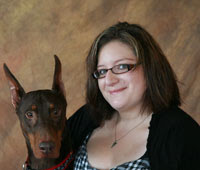Anesthesia For Your Pet
Written by Dr. Kevin Roeser
At St. Francis Animal Hospital, we use anesthesia nearly every day during routine and emergency surgeries, dental procedures, and other potentially painful procedures. The goals of anesthesia are fairly universal. We aim for a patient who is unconscious, immobile, and unaware of discomfort, but also for a patient who is breathing well and maintaining normal cardiovascular function, one who is maintaining an appropriate body temperature, and ultimately a patient who will recover swiftly but calmly at the end of the anesthetic episode. Though most veterinary practices perform anesthesia, not all anesthetic episodes are created equal. Our staff goes the extra mile to ensure the safest and most effective anesthetic practices.
Patient Monitoring
Every anesthetized patient has four primary monitors to track their status while under anesthesia. We use a pulse oxygenation monitor similar to the device that your own doctor would use on your finger to ensure an appropriate heart rate and blood oxygen level. An electrocardiogram (ECG) running throughout the procedure helps to track electrical activity within the heart, and alerts staff to abnormal heart rhythms that could affect cardiovascular function. Depending upon the size of the patient, a manual Doppler blood pressure or an automatic oscillometric blood pressure is used to monitor systolic blood pressure values. Finally, esophageal or rectal thermometers provide constant body temperature readings to help avoid hypothermia. While the monitoring devices themselves are an integral part of the process, the most important component is the team of technicians and veterinarians tracking the information and making adjustments based on the results. Each anesthetized patient is assigned a dedicated veterinary technician for this purpose. The technician also helps to assess parameters that a machine cannot assess such as eye position, jaw tone, breathing frequency and quality, and patient reactivity.
Intravenous Catheter Placement and Fluid Administration
Prior to inducing anesthesia, we place an intravenous catheter in all of our anesthetized patients. Patients are given a sedative medication injection before catheter placement, which helps to limit patient stress and discomfort. An intravenous catheter provides direct access to the patient’s bloodstream and is used to administer medications and fluid therapy during the procedure. Unless medically contraindicated, all patients will receive intravenous fluids throughout and sometimes briefly after their anesthetic episode. To aid in pain management during orthopedic surgery, mass removals, or other extensive soft tissue surgery, we will often replace the routine intravenous fluids with a constant rate infusion of pain medications; doing so also helps us to reduce the doses of other anesthetic medications for improved safety. Finally, in the unlikely event of an anesthetic emergency, having an intravenous catheter allows us to deliver life-saving medications as quickly as possible.
Customized Anesthetic Medication Protocols
Our doctors customize anesthetic protocols for every patient based upon age, concurrent health conditions, knowledge of historical anesthetic responses, and degree of discomfort expected with the corresponding surgical or dental procedure. When at all possible, we use medications that can be easily and promptly reversed. By using several medications in combination we can use safer, lower doses of each medication to limit potential adverse effects. Lastly, given the dynamic nature of any anesthetic episode, the responsible doctor will adjust the planned protocol to meet the needs of the patient throughout the procedure.
Monitored Recovery
Believe it or not, one of the most risky periods in any patient’s anesthetic episode is during the immediate recovery from the effects of their anesthesia. Careful monitoring of body temperature, breathing patterns, and recovery from the sedative medication is critical until the patient is sufficiently awake that he or she can manage these tasks on his or her own. Canine patients are in one-on-one contact with a technician until their endotracheal tube is removed, they can swallow and sit up on their own, and they can walk back to their recovery kennel. Cats, birds and small mammals are housed in small clear-fronted plastic recovery boxes immediately after anesthesia so that they may remain in the anesthesia area until they are fully recovered. The boxes also help to maintain their body temperature, cut down on visual and auditory insults during their recovery, and provide a comfortable recovery setting.
Follow Up Calls
In addition to communication with doctors and staff on the day of your pet’s procedure, you can expect a call on the following day to check in on their continued recovery. This gives us an opportunity to ensure that patients are relaxed and comfortable following their procedures, to answer any immediate questions about their recovery, or to make adjustments to care plans based on their status. It also gives you a chance to go over any questions you have to clarify recovery instructions and recheck recommendations.
If you have any questions about anesthesia in your pet, please reach out to us at (651) 645-2808 or group@stfrancisabh.com.
Employee Spotlight: Marie Adamczyk
Each month, we will spotlight one of our team members in order of years of service at St. Francis Animal Hospital.
Marie joined St. Francis Animal Hospital in 2003. She had attended classes at Normandale Community and Technical College, and joined the team after a stint in odd jobs, never finding the right fit until she found St Francis. She has a background in customer service, and while she loves all of her patients, she thoroughly enjoys their humans as well.
Her professional interests include geriatrics, hospice and palliative care, and pain management. She has been involved with the development of our hospice and palliative care and at-home euthanasia services within our practice. She juggles a wide variety of tasks every day. Above all, she excels at client service and education.
Marie serves as one of our Senior Veterinary Technicians. In addition to her technician duties, she serves as our practice’s Drug Enforcement Agency (DEA) Officer, manages all of our health certificates, and is the Veterinary Assistant Supervisor involved in the management and training of the veterinary assistant team.

While she no longer spends her days with her crazy Doberman, Koa, she relishes every moment the past 10 years together have brought.
She now enjoys spending her time tending to multiple cats in their home in Monticello. She is hoping to add some new critters such as chickens or bees to the clan.
Why do you love being a veterinary technician?
Above all things, my job is never boring. Each day brings new patients and their human families to which I can hopefully make a positive impact. Continual challenges and friendly faces make my days truly enjoyable.
Why do you love working at St. Francis Animal Hospital?
St Francis has not been just a job but a second home and family to me for over 15 years. One of the things I love most about this clinic is no matter what, we all care deeply for all of our patients.
National Hospice & Palliative Care Month
November is National Hospice & Palliative Care Month. Most people are familiar with the concept of hospice and palliative care in human medicine. Hospice and palliative care are growing areas of veterinary medicine as well. Hospice and palliative care generally refers to care provided to patients after a diagnosis of a terminal or incurable illness. The goal of hospice and palliative care is to provide your pet with a good quality of life free of pain and suffering during their final days to months. This care is focused on providing comfort, management of pain, and relief of anxiety. It is not focused on providing a cure.
This type of care focuses on the partnership between the pet, the family members, and the veterinary team. We educate you on your pet’s medical condition, and what to expect in the last weeks, days, and hours of your pet’s life. We counsel you on how to assess your pet’s quality of life, and when and how to determine when euthanasia may be the best option for your loved one. If a natural death is preferred, we will work with you to develop a plan to help you and your pet through the transition.
Veterinary hospice care includes, but is not limited to:
Education
First and foremost, we want to provide you with the education and resources necessary to understand your pet’s condition. We will provide you with written instructions tailored to your individual pet’s care. For some disease conditions, we have brochures or client education handouts available.
Pain Management
We focus on providing a multi-modal pain management program for your pet including conventional medications as well as laser therapy, massage therapy, and acupuncture.
Nutritional and Fluid Support
We will discuss the best method of nutritional and fluid support for your pet. This may involve subcutaneous fluid therapy as well as assisted feeding.
Wound Care and Bandaging
Some patients may require regular wound care or bandaging. Our veterinary team will provide you with the instructional training to provide this care at home.
Anxiety Management and Behavioral Modification
Many senior patients develop anxiety or other behavioral changes. We will discuss these changes with you and explore treatment options for your pet.
Management of Incontinence
Some pets develop incontinence. We will discuss methods of management specific to your pet’s condition.
While all of our doctors and technicians provide hospice and palliative care, Dr. Jennifer Blair, Dr. Patricia Novak, and Elizabeth Gunter, CVT, Director of Hospice & Palliative Care Services, have a special interest in this area of practice.
They are members of the International Association of Animal Hospice and Palliative Care (IAAHPC), an organization dedicated to promoting the knowledge of, and developing guidelines for, comfort-oriented care to companion animals as they approach the end of life. Dr. Novak earned her certification in Hospice & Palliative Care (CHPV) this year from the IAAHPC. Dr. Blair is trained in Traditional Chinese Veterinary Medicine (TCVM), is able to offer acupuncture, veterinary food therapy, and herbal therapy options, and will be earning her certification in TCVM Palliative and End-Of-Life Care (CTPEP) at the end of this year. Liz is finishing her AAHA Animal Hospice & Palliative Care Certificate Program. In addition, Christine Capistrant, CVT, CMT, Director of Integrative Services, is certified as a Pet Loss Counselor through the Association for Pet Loss and Bereavement (APLB).
When the time approaches for your pet to transition from this life, we will discuss the options available to you for euthanasia. Many of our clients prefer home euthanasia within the comforts of your pet’s own home. We also provide euthanasia services at our St Francis Integrative Services location in addition to our main St. Francis Animal Hospital. Lastly, we will help counsel you on the options available for after-care of your pet as well as grief support services for your family.
For more information on the services available for you and your pet, please contact us at (651) 645-2808.
News Briefs
Nextdoor’s Neighborhood Favorite
Thank you so much to everyone who voted for St. Francis Animal Hospital for Nextdoor’s Neighborhood Favorite! We were voted the Favorite Veterinarian in 18 neighborhoods with a total of 93 votes. We are so grateful and honored to be your neighborhood favorite!
Pet Loss Library
We have a selection of books on pet loss and grief support for both adults and children available to check out from our Pet Loss Library. In addition, we have two memory books available for purchase: Forever In My Heart: Pet Memory Book and I Remember: Children’s Pet Memory Book.
St Francis’ Payment Policy
We wanted to provide a gentle reminder that payment for veterinary services and medications are due at the time of services. We do not have the ability to provide billing services or payment plans. We encourage you to explore Care Credit or pet insurance for financing options.
Image Credit: Shutterstock

